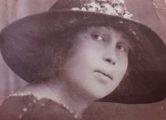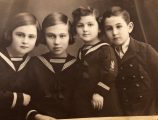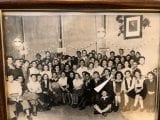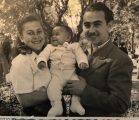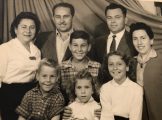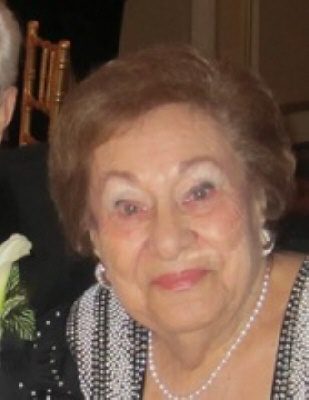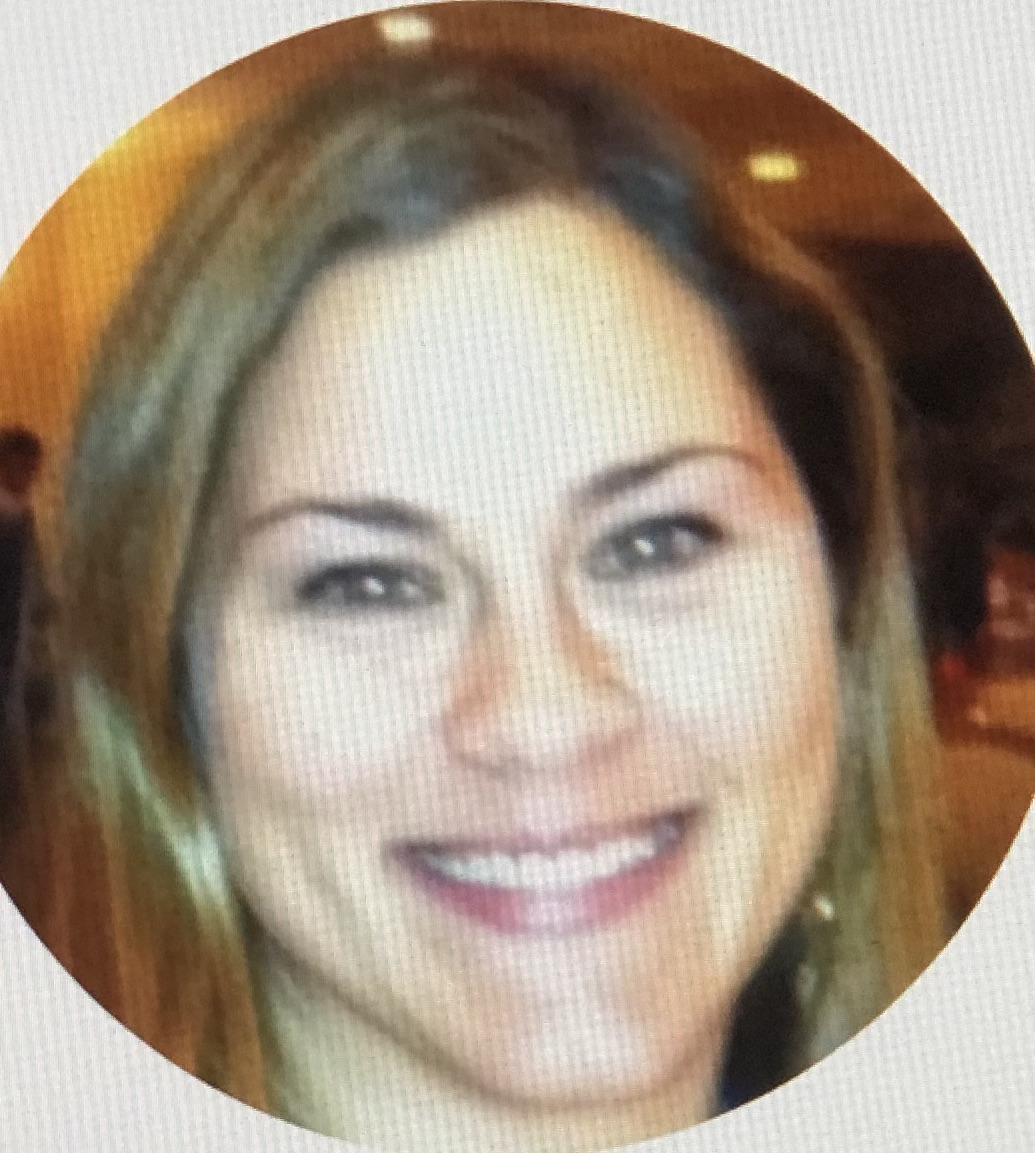- Local Survivor registry
- ASHER NIEDERMAN
- Local Survivor registry
- ASHER NIEDERMAN
Survivor Profile
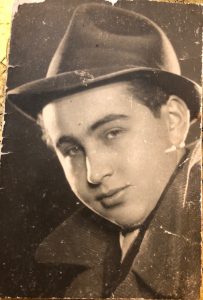
ASHER
NIEDERMAN
(1926-2021)
PRE-WAR NAME:
ASHER NIEDERMAN
ASHER NIEDERMAN
PLACE OF BIRTH:
UZHOROD, CZECHOSLOVAKIA
UZHOROD, CZECHOSLOVAKIA
DATE OF BIRTH:
NOVEMBER 18, 1926
NOVEMBER 18, 1926
LOCATION(s) BEFORE THE WAR:
UZHOROD, CZECHOSLOVAKIA
UZHOROD, CZECHOSLOVAKIA
LOCATION(s) DURING THE WAR:
UNGVAR, HUNGARY; BUDAPEST, HUNGARY
UNGVAR, HUNGARY; BUDAPEST, HUNGARY
STATUS:
SURVIVOR
SURVIVOR
RELATED PERSON(S):
NAOMI NIEDERMAN - Spouse (Deceased),
ARIE NIEDERMAN - Son,
JAIME NIEDERMAN GOLD - Granddaughter,
ERIC NIEDERMAN - Grandson,
MEIR NEIDERMAN - Son (Deceased),
BRYAN NIEDERMAN - Grandson,
BRETT NIEDERMAN - Grandson,
ASHER NIEDERMAN Great - - Grandson,
AVERY GOLD Great- - Grandson,
ELI GOLD Great- - Grandson,
NOAH NIEDERMAN Great- - Grandson,
AIDEN NIEDERMAN Great- - Grandson
-
BIOGRAPHY BY Jaime gold, granddaughter
Asher Niederman, my grandfather, was born on November 18, 1926 in Uzhorod, Czechoslavakia. Asher had three sisters and was actively part of the Zionist organization since he was six years old.
Asher’s mother passed away in 1938 and he spent much of his time with his uncle, where he worked in his uncle’s bakery, learned the trade that saved his life, and with the Zionist Organization, a social setting where he learned, talked about and raised money to go to Israel.
During the war, my grandfather worked in a bakery in Budapest from 1941 – 1944, when he was sent to a work camp in Jazberany and worked in the kitchen there. He was able to escape from the work camp, found an old boss and worked in a bakery again until the Iron Cross took over the government of Hungary.
In the fall of 1944, Asher went to the Zionist underground where he was literally hidden in a bunker under a house, with a certificate to go to Israel. The Hungarians found them and my grandfather was taken to jail. The Zionist Organization came to his rescue and they escaped to safe houses set up by the Swiss Consulate until liberation.
As part of the Zionist group, he traveled to Romania for a month. When he was sent back to Budapest to bring another group down, he met my grandmother Naomi Niederman (Etta Lefokovitz) for a second time. He asked if she wanted to go to Romania with the group, and this time, if she wanted to be his girlfriend. She did and they have been together ever since.
From Romania, my grandparents travelled through Italy for a year to get to Palestine, staying at various DP camps along the way. When they arrived in Palestine, they settled in Kibbutz Ma’agen. My grandfather left the organization in 1947, moved the family to Tel Aviv and then went into the Israeli Defense Forces for two years.
Asher and Naomi worked hard, enjoyed beautiful scenery and eventually had two sons (my father Arie and uncle Meir). They made their way to Newark, New Jersey in May of 1959 and eventually settled in Springfield, NJ where they still live today. They are happily married with a loving family that includes four grandchildren and five great grandchildren who all love them very much.
Naomi Niederman passed on August 20, 2021 in her home after a long illness surrounded by her beloved husband, Asher, and her son Arie and loving family. Asher passed on August 30, 2021, ten days after Naomi. Asher and Naomi had been married for 75 years.
Editor’s Notes:
Refer to Jaime Gold, granddaughter in Voices of the Descendants.
Refer to Historical Notes below for UZHOROD (Czech Užhorod; Hung. Ungvár) and Zionist Youth Organization.
-
SURVIVOR INTERVIEW:
- Dates: May and June 2019
- Location: Niederman Residence
- Both Interviews with Asher and Naomi Niederman
- Interviewer: Nancy Gorrell
Q: Describe your family background.
I grew up in Uzhorod a big city of 600,000 people. My mother was born in the same place. My father, Leopold, was born in a small village in Czechoslovakia. My father was a tailor, self-employed, and two people were working with him. My mother, Sara Feld was a housewife. I had three sisters: Sylvia, Alice, and Cornelia, the youngest born in 1930. I was the second child and only brother. We some had fights growing up. We were a working family. My father was working very hard. It was not easy. He prepared everything for the workers. They worked together. I was always hungry.
Q: What was your schooling like?
I went to Jewish school for three years and then after 3rd grade I went to a Czech school with Jewish and Gentile children. I had many Jewish and gentile friends. I never experienced any discrimination when I was young. Nothing in school. I had a very nice life in 1938.
Q: Was your family religious or observant?
We were very modern Jews; my father did not have a beard. I went to synagogue every holiday and shabbas. Almost every street had a synagogue. We went to the small and big synagogues.
Q: What happened to cause your life to change in 1938?
When the Hungarians came in 1938, my mother died a couple months later from being sick. Her hand was paralyzed and she couldn’t lift her arm. Things got very bad. My father remarried within a year, and I got Bar Mitzvahed. My aunt Charna took care of us when my mother was alive to help with all the children. I did not get along with my stepmother. My father’s uncle came and took me to his bakery. I helped in the bakery. I was at my uncle Morris’s (Niederman) for a half a year but left because he refused to buy me clothes so I could go to temple to say Kaddish. I went back to my father and stepmother.
Q: What happened to your education at this time?
I did not go to high school; I only went to grammar school. I was in Ungvar (Hungarian for Uzhorod), and got a job at a different bakery. I went back home in 1940. Had a fight with the boss and went to Budapest.
Q: Describe your experience with the Zionist organization growing up.
I was always in the Zionist organization from age six. We were singing, getting together, dancing, talking, and learning about Israel. That was the only place to play. Friday night we’d take our own wood and a room in a house and we’d come together. We’d work to raise money to go to Israel. We put on shows to make money. In one show I was singing to make money for Israel. I was supposed to go to Israel, but in 1941 Polish refugees came and they got the certificates to go to Israel first. In Budapest I ended up working a bakery again. I wanted to be trained in ironworks. But the Jewish organization asked, “What did you do? I said, “Worked in a bakery. They said, “You will go to a bakery.” I worked in the bakery in Budapest for three years, from 1941-1944.
Q: You survived the war years in a bakery in Budapest?
Most of the time. I had no discrimination during the war years except when I had to wear the yellow star a couple of months before invasion. I didn’t wear it in the bakery (it was a Jewish bakery). Then in the summer of 1944 I was sent a letter from the Hungarian government to report to a work camp in Jazberany, Camp # 101-322.
Q: Describe your experience in the work camp.
I was selected because of my age, born in 1926 making me 17. From the camp we walked seven miles, and from there we were registered into groups like soldiers. And then we walked five or six miles more to a little town where we settled down overnight. Then we heard bombing and then the next morning we went back to Jazberany and they took us back to Solnok. This was a train station and the whole station was bombed overnight. I was working there in the kitchen for three weeks. They asked, “Whose a cook? Who can wash dishes? I answered. “I can wash dishes.” I washed the dishes. That’s what I did in the camp. Then they took us to another place in Budapest where I also worked in the bakery. A couple of weeks later, I escaped from the camp and found the Zionist Organization. I found my old boss who gave me a job in the bakery until liberation.
Q: Where were you when the Iron Cross took over the government of Hungary?
I escaped from the work camp and I was in the bakery at that time in Budapest. I went to the Zionist underground. This must have been in the fall of 1944, sometime around October. I was in hiding. I had gentile papers.
Q: Describe your experience with the Zionist organization in Budapest at this time.
The Zionist organization put me in a bunker –the organization Dror Habonim. I had my certificate to go to Israel. They knew about it. There were twenty of us in the bunker in hiding, under the house, like a shed underground. The Hungarians caught the runner (messenger) we send out. They interrogated him and he told them where we were and they circled us and closed in. When I saw them I ran downstairs. They said come out. Then they threw down a smoke bomb and a rifle hit me in the face. The smoke was so heavy no one could come out, and they took us to jail. It was winter; there was snow outside.
Q: How did you get out of jail?
It took three days for them to find us at the jail in Buda. The Zionist organization got us out – they helped us escape. They paid Hungarian officers off – the Hungarian officers went into the jail with fake names to get us out, they said they were going to shoot us. Zionists paid off the officers to smuggle us out and take us to safe houses. The Swiss consulate set up the safe houses. I was liberated in the Swiss consulate.
Q: Describe your experience being liberated and being with Naomi.
We stayed in the Swiss consulate for a couple weeks until liberation. It was a beautiful house. The first thing we did, if we saw a Jewish kid, was to bring him into the consulate. After a few days, I went with a Russian officer looking for his girlfriend who lived by a church. Then we came to a barricade, and I was questioned and then he left. From there I went to the organization (the same day) and I saw Naomi the 2nd time (The first time was when she was getting water for the Red Cross in Budapest). Then I left with a group of Zionist youth to go to Romania; a month later they sent me back to Budapest and then the Zionist organization asked me to bring down another group.
Q: Describe how you and Naomi got together.
I saw Naomi a 3rd time. I asked her to come with us to Romania. I then asked her “Do you want to be my girlfriend? If not, you’ll find someone else.” She didn’t say anything, but she went with the group to Romania. It was March 1945. We were in Romania together a couple of months when we all realized we couldn’t go that way to Israel. We went back to Budapest and stayed there a couple days. Naomi was with me the whole time.
Q: How did you get to Palestine?
The organization wanted us to stay Budapest, but we wanted to go to Israel so we left by train to Austria and from Austria we went by train to the English zone. There we went over a river to a DP camp (English) with whole group of 40. I don’t remember how long it took us. It was a good several months. Then a Jewish soldier from the English army came to the DP camp, named Judenberg, as an officer and asked to let us out hiking every weekend. After that we were ready to escape. We escaped and then we went on a train all the way to the border of Austria over the mountains to Italy.
Q: What was it like in Italy?
We always had a leader with us. We came to a place where hundreds young people were. It was also like a camp but a Jewish camp. The town was Tarvizo. From there after a couple weeks we went to another DP camp, and from there we went to Padua and then Nonantola. That was a castle—a beautiful place! I have a picture of Naomi working in the fields there. They were all DP camps.
Q: What happened next?
Then trucks came and took us to a boat. We were on a boat for two weeks going to Haifa. Ancisereny was the name of our boat. It was the last boat that they didn’t take to Cypress. We were in Haifa in a British camp (Atleet) for a couple of weeks, and then we went to the Kibbutz Ma’agen.
Q: Describe your life on the kibbutz Ma’agan.
Naomi and I lived on the kibbutz for six months and then we were married on February 22, 1946. There are no pictures of our wedding. On the kibbutz, four couples were married with one ring!
Q: What work did you do on the kibbutz?
I was a baker. Just one day I went and worked in the fields picking tomatoes. I went back to the kitchen to be a baker. After a while I left the kibbutz due to political differences. I left with my family to go to Tel Aviv. And from that time on I was not in the Zionist organization. My first son Ari was born 1947 (in Hadash).
Q: What did you do in Tel Aviv?
I worked again in a bakery. But in 1948, I went into the army for two years and fought with the Israeli Defense Forces.
Q: What happened after you got out of the army?
I went to see my cousin in Beersheva. I went to see the bakery. They invited me to be their baker. I settled my family in Beersheva and I became partner. Meir was born in 1952. In 1956 I broke up with my partners in the bakery. I went into the army for two months more to fight in the Sinai War. Then in 1957 they had to hire more bakers from the big aliyah from Poland. I got involved in labor organizing for the new immigrants from Poland. I became a leader. We pulled a strike. They settled. But I was not working. I got a salary but not for too long. I got severance and I was out of the bakery. I had trouble getting another job due to the newcomers so I decided to move.
Q: Where did you go next?
I went to see a friend from Tel Aviv. He told me I needed a visa to go to America. I had an uncle, Weissman in America. He changed his name from Niederman to Weisman when he fled Czechoslovakia to go to America. It took me three months to prepare and Naomi and I went to America in May of 1959 with the children.
Q: Who survived in your family?
From my father, there were 12 children, six boys and six girls, two boys from my father survived and one girl.
Editor’s Note: Refer to Naomi Niederman’s Registry for Asher’s spouses’ testimony on liberation and post-war years
-
HISTORICAL NOTES:
UZHOROD (Czech Užhorod; Hung. Ungvár), city in Transcarpathian district, Ukraine; part of Austro-Hungary until 1920, when it passed to Czechoslovakia; between 1938 and 1945 in Hungary; 1945–1991, in the Soviet Union.
Uzhorod was a stronghold of the Orthodox as well as of Ḥasidism. From 1890 a Jewish elementary school, whose language of instruction was first Hungarian and later Czech, functioned there. Subsequently Hebrew schools were established. The community also maintained a talmud torah school and a yeshivah. In 1904 a central synagogue was established in a magnificent building. There was also a Jewish hospital and home for the aged.
Zionist Youth Organization:
Between the two world wars Uzhorod became a center of intense Jewish national and Zionist (Revisionist) activities. In 1930 the community numbered 7,357, about one-third of the total population. Following the Munich pact (1938), Uzhgorod was annexed by Hungary, which immediately implemented anti-Jewish legislation. In the winter of 1939/40, all Jews of Polish citizenship or Czech citizens originally from Poland were expelled to Poland, and many died under the severe conditions. The young were conscripted into forced labor and sent to the Russian front, never to return. On Passover (April 21–23) 1944, all the Jews of Uzhgorod and the surroundings (25,000 persons) were concentrated in a ghetto located outside the city (in a brick factory and a lumber yard), and three weeks later all were deported to Auschwitz.
Following the war several hundred survivors returned to city, most of whom later went to Czechoslovakia.
By 2005, the Jewish community had a synagogue, a Jewish community center, a Jewish day school, and a magazine entitled Gut Shabbos, which covers Jewish activities in the region of the Carpathian Mountains. The Uzhorod Jewish community oversees the nearby Jewish communities of Munkatch, Chust, Vinogradova, and Rachov.
Czech History:
Czechosolvakia was created after WWI from the Austro-Hungarian territories of Bohemia, Moravia and Slovakia. The 150,000 Jews of Bohemia and Moravia, largely German speakers, were part of the middle class. Anti-semitism existed, but had not become politicized. The new nation state gave Jews full social and political freedom.
Slovakia, once part of Hungary, was poorer than Bohemia and Moravia, and the 200,000 Jews who lived there were largely excluded from the community. Churches and political parties characterized Jews as the enemy. The assimilated Jews spoke Hungarian but the Orthodox spoke Yiddish, dressed differently and kept themselves apart.
Hitler invaded Czechoslovakia in March 1939 and the Czech resistance produced brutal German retaliation. Most resistance came from Bohemia and Moravia. To gain an ally, Germany declared Slovakia an “independent” state rather than an occupied territory. Slovakia was the first state to agree to deport Jews. The deportation of Jews to Poland began in 1939. Theresienstadt was built in 1941 as a model concentration camp. In Slovakia, the Nazis designated five assembly points for deportation. From Marc to August 1942, 75% of the Jews were deported primarily to Auschwitz. By the war’s end 11%, or 35, 000 Czech Jews survived, with 5000 in hiding and the rest returning from deportation. Soviet troops entered Prague in April 1945.
-
Sources and Credits:
Credits:
SSBJCC Interviews May and June 2019; Interviewer: Nancy Gorrell; Biography by Jaime Niederman Gold, Granddaughter; Digital and family photographs and documents donated by Naomi and Asher Niederman and Arie Niederman.


